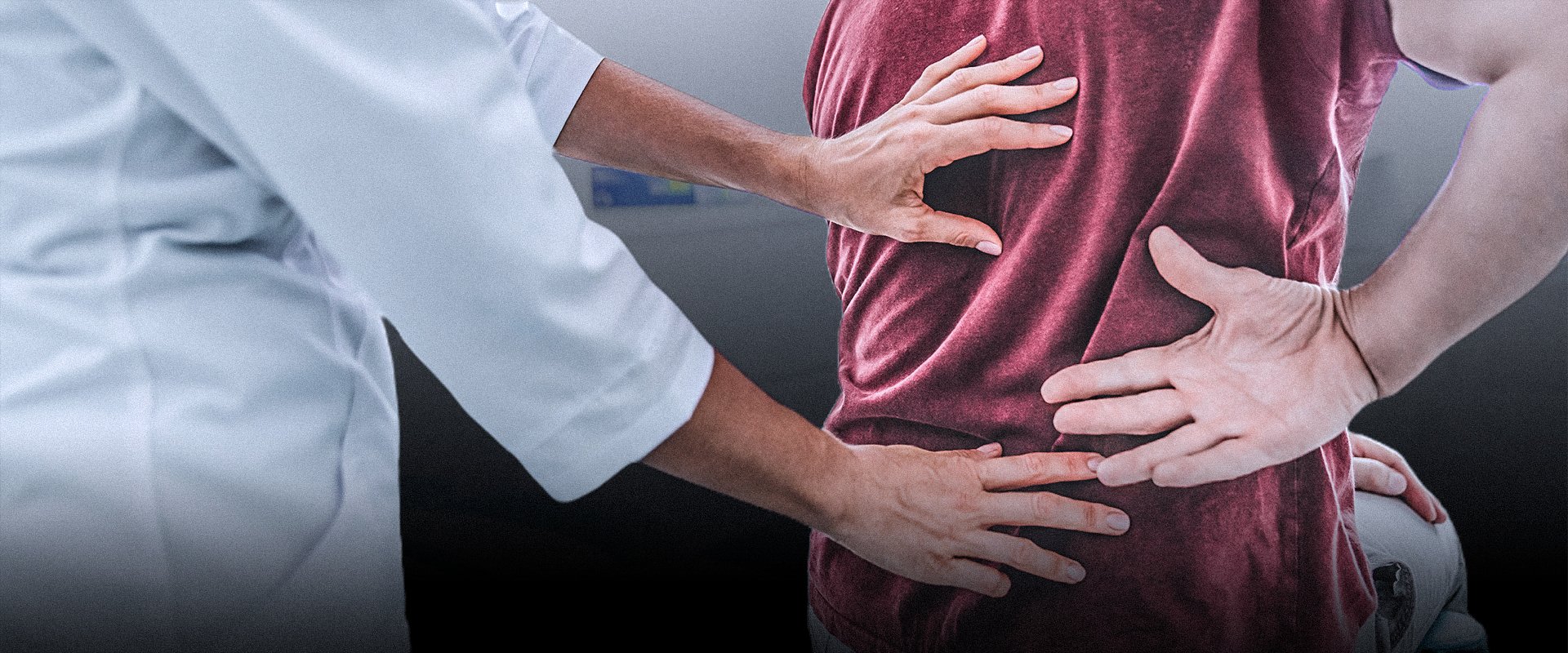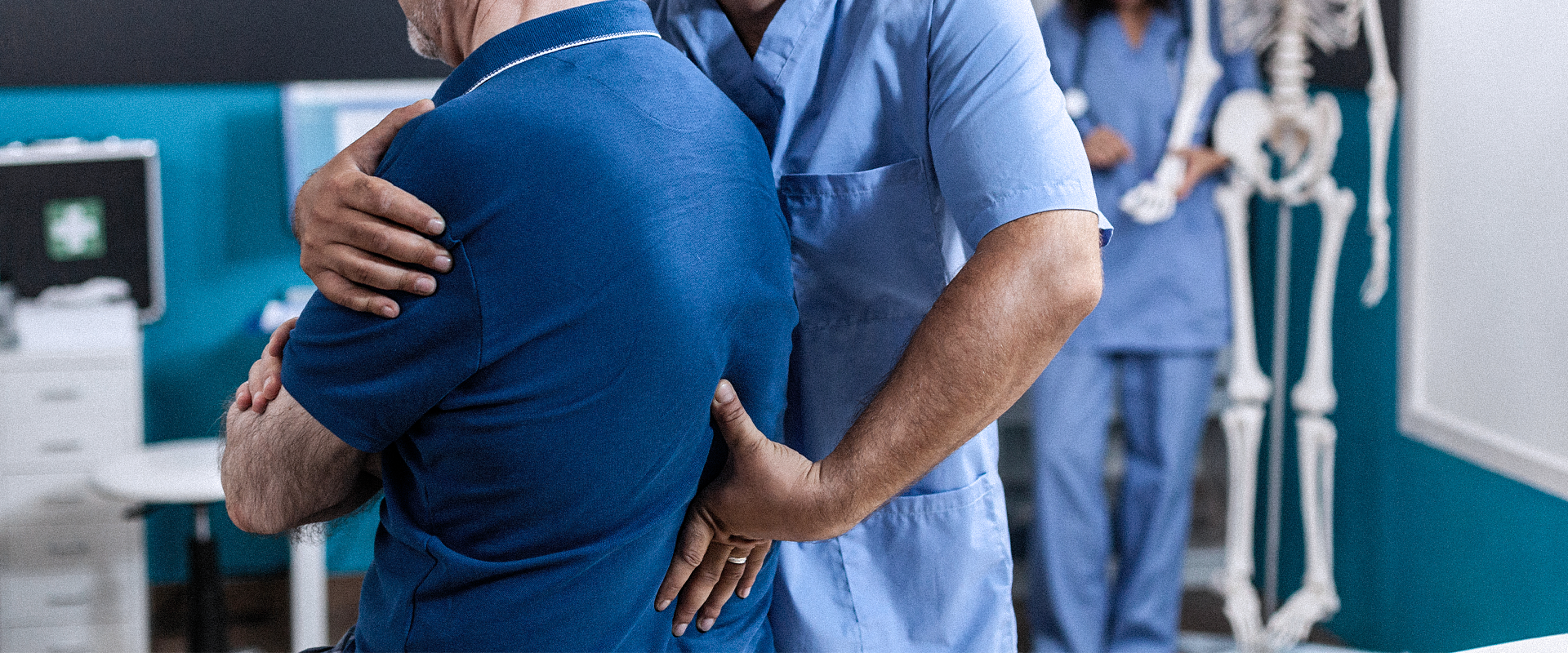
Physical Therapy for Degenerative Disc Disease
AT EVOLVE
Physical Therapy for Degenerative Disc Disease
HOW CAN PHYSICAL THERAPY HELP MY DEGENERATIVE DISC DISEASE?
The term “degenerative disc disease” may sound scary but it is actually a natural part of the aging process. Many people that have degenerative disc disease (DDD) experience no pain, but in some cases DDD can be associated with back or neck pain and in severe cases, radiating symptoms into the arms or legs. When pain or discomfort is caused by DDD, physical therapy is a conservative and effective treatment method to reduce symptoms and manage the condition.
WHAT DOES PHYSICAL THERAPY FOR DEGENERATIVE DISC DISEASE LOOK LIKE?
Our staff will individualize each physical therapy plan of care to your specific needs. We will start with an initial evaluation to better understand your medical history and the pattern of symptoms you are experiencing. We will discuss your goals for physical therapy and perform an examination to assess your spine and any other areas of the body that may be contributing to your symptoms. With all of this knowledge in hand, we will create a custom program that may consist of hands-on techniques, performed by our therapists, to your spine and nearby areas as well as carefully prescribed movements and exercises performed by you in the clinic and at home.
WHEN WILL I BEGIN TO SEE RESULTS?
While full resolution of symptoms can take some time, you may begin to see some results right away. You should experience improvements in many symptoms such as pain and stiffness within a couple of weeks but returns in strength, flexibility and overall mobility may take longer. Achieving long lasting results may take some time, but dedication to your program will not only help you achieve these results but will help to decrease the likelihood of symptoms recurring in the future.
THE DETAILS ON DEGENERATIVE DISC DISEASE
Degenerative disc disease involves the intervertebral discs of the spine. Intervertebral discs sit between each vertebral bone and provide cushion, shock absorption and support. These discs are made up of a gelatinous center called the nucleus pulposus surrounded by a strong, fibrous outer layer called the annulus fibrosus. Despite its name, degenerative disc disease is not actually a disease. It simply refers to a gradual wearing of these discs with age. Most people will have some evidence of DDD by the time they are 50yo but many will never experience any significant symptoms. It is important to remember when looking at imaging like an x-ray, that evidence of a condition like DDD does not necessarily correlate with the presence of symptoms.
As discs age they become dryer, they can also tear due to injury or repetitive forces placed on the spine from sports or repetitive activities, for example. All of these factors play a role in DDD. The symptoms of DDD can mimic other causes of back and neck pain. Early on, symptoms of DDD are often isolated to the neck or back. If the disc degenerates enough, though, space between the vertebrae decreases which can result in bones rubbing together or increased compression on nearby nerve fibers. Some symptoms commonly associated with DDD are:
- Pain is primarily found in the neck and lower back
- Pain can range from mild to severe
- Pain may come and go
- Pain may be accompanied by numbness or tingling radiating into the arms and hands, buttocks or thighs
- Weakness may develop in muscles innervated by nerves near the affected disc
- Pain can feel worse when sitting, bending, twisting, lifting or carrying items
- Changes in bowel or bladder function can occur with serious nerve compression
End Injury Progression
Physical therapy for Degenerative Disc Disease has proven to prevent injury, slow and even stop pain issues, improve performance, and reverse injury progression in many cases.
Relieve Pain
The movements used in this technique can target your entire body helping you to manage discomfort and pain during the course of your physical therapy treatments.
Improve Range of Motion
Posture awareness is an important area to focus on due to the fact that certain positions may cause you further discomfort and pain.
Restore Mobility
You can regain mobility and flexibility by taking part in the stretches and exercises as prescribed by your physical therapist.
How Long Will Physical Therapy for Degenerative Disc Disease Last?
If you decide to work with a physical therapist to help with DDD, your entire treatment plan could consist of around 8-20+ different physical therapy sessions that will each last 60-90 minutes. Once you complete your customized physical therapy treatment plan, you will be able to continue to do the prescribed stretches and exercises utilized during your PT sessions yet in the comfort of your own home.
HOW DO PHYSICAL THERAPISTS ADDRESS DEGENERATIVE DISC DISEASE?
The goal of physical therapy treatment for DDD is to relieve symptoms while addressing any underlying or contributing factors that may predispose you to recurrence or progression of your pain. As mentioned above, my team and I will create an individualized treatment plan based on your unique presentation and the findings of our exam, but here are some treatments commonly used to manage DDD:
Reduce pain, inflammation and irritation: While completely eliminating your symptoms may take time, making you more comfortable in the meantime is an important first step in your rehabilitation. Applying modalities like ice, heat or electrical stimulation to the affected area can often give you some relief. Soft tissue mobilization or gentle joint mobilization may also be employed by your physical therapist to reduce tissue irritation.
Improve flexibility: When a joint lacks the flexibility needed to perform a movement optimally, extra stress and strain may occur in the spine. Your back PT program may include stretching, myofascial release techniques, joint mobilization and mobility exercises to improve flexibility in the back itself but also in other areas of the body such as the ankles, hips, and shoulders.
Build up your strength: You will learn exercises to help strengthen the muscles around the back and abdomen to properly control the spine and neck and also in the shoulders, arms and legs to minimize excess strain transfer to the neck and back.
Aerobic activity: If you are worried about how participating in aerobic activity may affect your pain, physical therapists can help you begin a low impact aerobic training program like walking or swimming that can help you manage pain symptoms and also promote general health and weight-management benefits.
Optimize your movement and posture: Learning proper biomechanics and posture and enhancing the neuromuscular control of joints and muscles is an essential component of healing and preventing back and neck pain associated with DDD. Physical therapists are movement experts and through analyzing your movements, can guide you in improving how you sit, stand and move.
DON’T WAIT TO GET HELP WITH YOUR DDD SYMPTOMS
If you have neck and back pain or think you might be experiencing symptoms related to DDD, our team of therapists is ready to help you find some relief. Call to schedule an evaluation today.
Mill Basin (located in Harbor Fitness)
6161 Strickland Ave
Brooklyn, NY 11234
Monday: 7am-8pm
Tuesday: 7am-8pm
Wednesday: 8am-5pm
Thursday: 7am-8pm
Friday: 8am-1pm
Park Slope (located in Harbor Fitness)
550 5th Ave.
Brooklyn, NY 11215
Monday: 9am-8pm
Tuesday: 8am-6pm
Wednesday: 9am-8pm
Thursday: 8am-6pm
Friday: 8am-3pm
Gravesend
372 Avenue U
Brooklyn, NY 11223
Monday-Thursday: 8am-8pm
Friday: 8am-3pm
Midwood
945 Kings Highway
Brooklyn, NY 11223
Monday-Thursday: 12pm-8pm
Ready to take the next step to a healthier you?
Contact Us Today!
PHYSICAL THERAPY FOR DEGENERATIVE DISC DISEASE!
Need physical therapy for Degenerative Disc Disease?
Let our caring and compassionate physical therapists help you with relieving pain while getting you back on your feet comfortably.
Call now to schedule your first PT consultation free of charge.
Call: 1-718-258-3300







